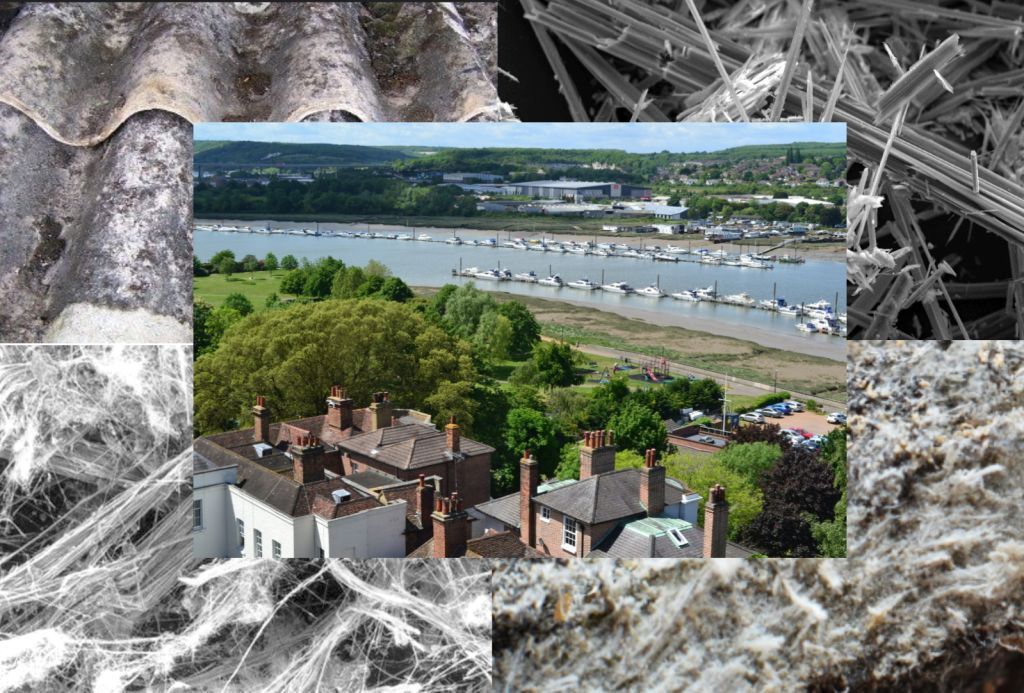
“Asbestos… that’s all in the past, isn’t it?” can be the reaction of homeowners or duty-holders when asked about asbestos surveys before a major refurbishment or demolition. Those living and working in the south east towns of the Medway are always strongly advised to order an experienced asbestos survey Kent.
Latest government figures show that the Medway Towns of Chatham, Gillingham and Rochester remain in the UK top 10 for the highest number of deaths from mesothelioma – asbestos-related cancer of the lung linings. A total of 22 deaths caused by the deadly disease in the Medway area is nearly double the national average, according to the Health and Safety Executive (HSE).
Table of Contents
Asbestos survey always needed – half of all households could still contain toxic ACMs
The historic dockyard town of Chatham and the surrounding Medway have long been known for recording one of the highest asbestosis disease and mesothelioma fatality rates nationwide. In February 2012, the second highest mesothelioma fatality rate was found to be in the Medway area of the south east, including the towns of Rochester, Strood, Chatham, Gillingham and Rainham, where 104 deaths from mesothelioma were recorded between 2006 and 2012.
There’s a very good reason why the lethal health dangers of asbestos are not consigned to Britain’s industrial past and an asbestos survey always needed. Of an estimated six million tonnes of asbestos still hidden within the fabric of more than a million and half buildings constructed or renovated up until 2000, half of all households around the UK could still contain toxic ACMS hidden within the fabric of the building, according to the Health & Safety Executive (HSE).
Regular asbestos waste removals from residential garage roofs and industrial units
Any residential property, from a private dwelling to a council estate flat, built or renovated at any time up to 2000 can still conceal asbestos containing materials (ACMS). The deadly fibres are mostly to be found in insulation wallboard (AIB), soffits, corrugated cement roof sheeting or tiles. Around a third of all asbestos can still be in textured ceiling coatings although as much as 15 per cent of asbestos can also be found in insulated boiler flue pipes, cold water storage tanks, sprayed insulation, eaves, gutters and rainwater pipes, etc.
One of the most frequently found locations is a garage roof, an extension or outbuilding covered with the dull grey/white asbestos cement sheeting. Regular asbestos waste removals continue to be made from residential garage roofs as well as in commercial or industrial units. However, misunderstanding and confusion can still exist over when to order an asbestos survey, and how to correctly dispose and protect against exposure during an asbestos removal.
Under Regulation 4 of the Control of Asbestos Regulations 2012, a person who is the duty-holder at a non-domestic premises is required to:
- Take reasonable steps to find out if there are materials containing asbestos, and if discovered, identify locations, quantity and condition.
- Presume materials contain asbestos unless there is strong evidence to suggest a non-asbestos material is present.
- Assess the risk of anyone being exposed to fibres from the materials identified.
- Provide information on the location and condition of asbestos to anyone who is liable to work on or disturb the materials.
An experienced asbestos survey must be carried out
If asbestos is identified, the Regulations also stipulate that an authorised experienced asbestos survey must be carried out to determine its condition. Poor condition (friable) materials require immediate secure containment and safe removal. Undamaged, unworn ACMs can be left secured in place and undisturbed under a strict control management policy.
In far too many cases, however, duty owners, property owners or building contractors may decide that to avoid additional time and expense, they will simply remove any asbestos without observing any obligatory protection or disposal procedures.
Under the Control of Asbestos Regulations 2012 it is a legal requirement for potential asbestos risk of exposure to be managed in all commercial properties as well as in public buildings. Property owners, duty holders and landlords who fail to meet their legal obligations regularly brought to court by the Health and Safety Executive.